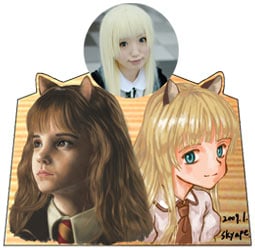Back when I was in college I visited the Grand Canyon, and happened to see a poster advertising an IMAX movie which showed the word for “Grand Canyon” in kanji. I mistakenly thought it was Japanese, but a friend who was with me said, “No, this is Chinese. We use katakana for foreign place names, never kanji.” Japanese has three writing systems: hiragana, a syllabary for writing basic words and grammatical particles; katakana, a mirror of hiragana used for writing foreign loan words and names; and kanji, used for expressing complex meanings like “looking for a Japanese Girlfriend” or “Absolute Zone.” By definition, the two kana writing systems are for sounds only, and have no inherent meaning, unlike kanji, which has both pronunciation and some meaning. While I’m happy I don’t need to memorize kanji characters to write, say, “Los Angeles,” I wonder if a tiny amount of poetry and beauty is not lost. One of the more entertaining viewings of Star Wars I’ve had was watching a copy with Chinese subtitles. Whereas words like “Death Star” or “the Force” are rendered in fairly boring katakana in Japanese, I found seeing what Chinese kanji had been assigned to these words to be quite entertaining.

On the left, gurando kyanion as it’s called in Japanese, with Chinese kanji on the right.















